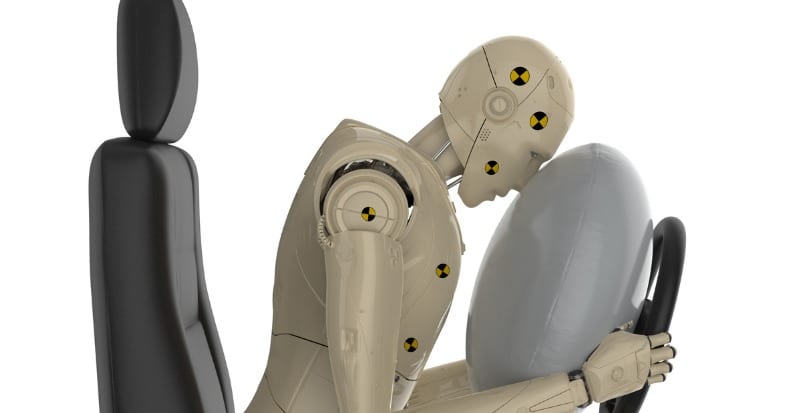Experts estimate that whiplash associated disorders (WAD) from motor vehicle collisions (MVCs) affect about 300 for every 100,000 people in the Western each year. Suffice it to say, that’s a lot of people!
Crash tests have demonstrated that the risk for whiplash is much greater when the backrest is leaned backward and/or when a headrest is lacking (in older cars) or is too low in relation to the head. The key is to prevent the head from extending backward over the top of the seat, which can lead to more severe soft tissue injuries in the neck. While it’s not always possible to anticipate an MVC, past research has shown that looking forward at the time of the collision may reduce WAD injury/severity risk.
On the topic of necks, individuals with thinner necks have a greater risk for injury, which may explain why women are more often affected by WAD than men. However, regardless of whether you are male or female, staying fit and keeping the neck muscles strong is important. It’s been suggested that individuals with a history of neck pain are more likely to experience more severe whiplash injuries, as are those in poor general health. There are conflicting studies that report that seat belt use may increase the risk for WAD, but after reviewing multiple studies, the consensus is that seat belts save lives, so buckle up!
In many cases, WAD patients may miss work, especially if they have a job with high physical demands. Patients with more severe injuries may miss up to twenty-five days of work, while those with minor injuries may still be out for up to ten days. One study found that about 31% of the 800 cases the researchers looked at took no time off work, 52% returned to work after only four days off, and 90% returned within thirty days off. About 4.9% of the patients in the study were still not working after twelve weeks.
Several factors suggest a WAD patient may experience a slower or more limited recovery: a history of neck pain; loss of neck motion measured post-MVC; increased sensitivity to cold stimulation; high pain levels post-MVC; less severe crash-type; dizziness, arm pain or numbness; low back pain; and poor expectations of recovery.
The good news is that treatment guidelines have consistently recommended spinal manipulation— he primary form of treatment provided by doctors of chiropractic—for managing whiplash-related injuries.
